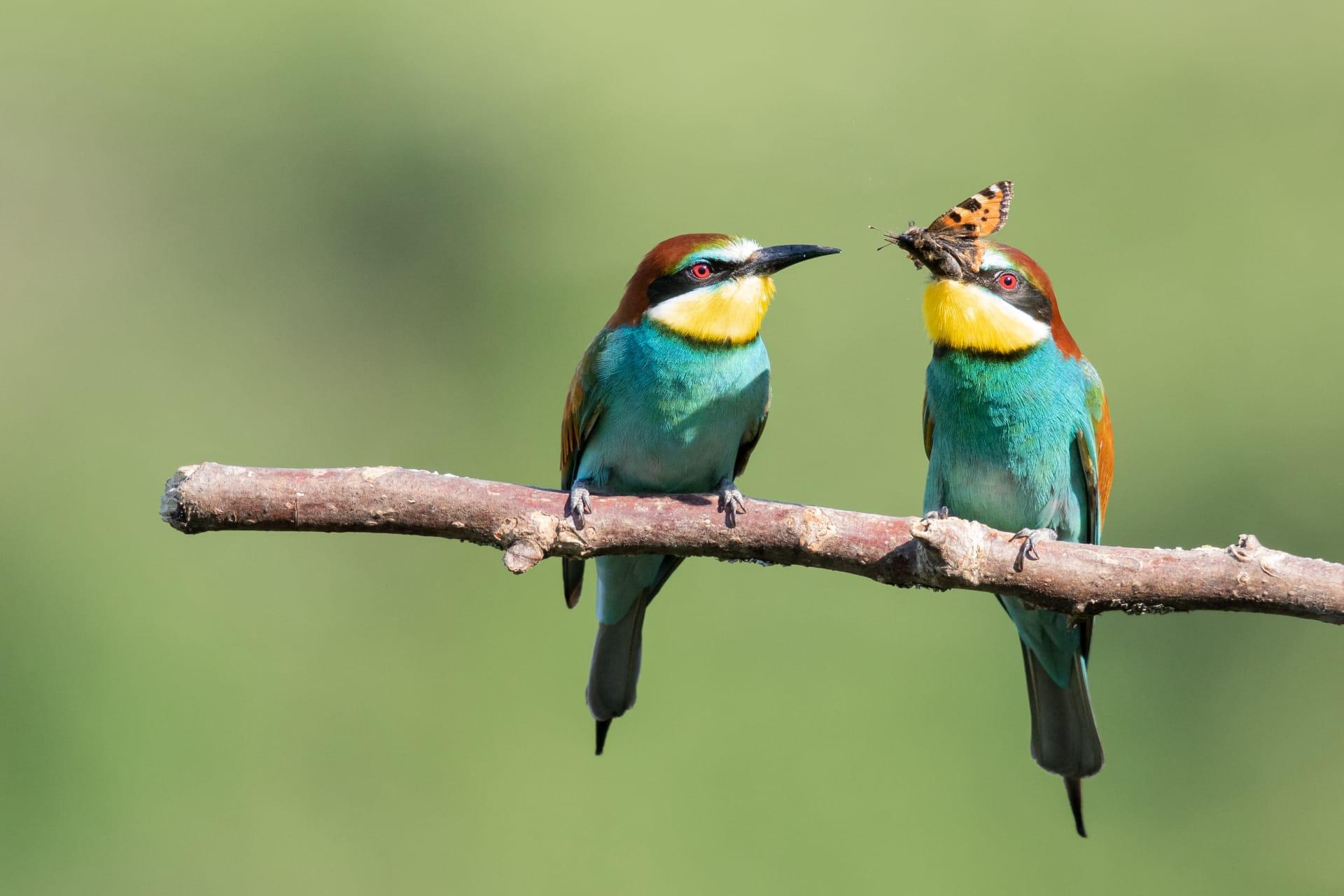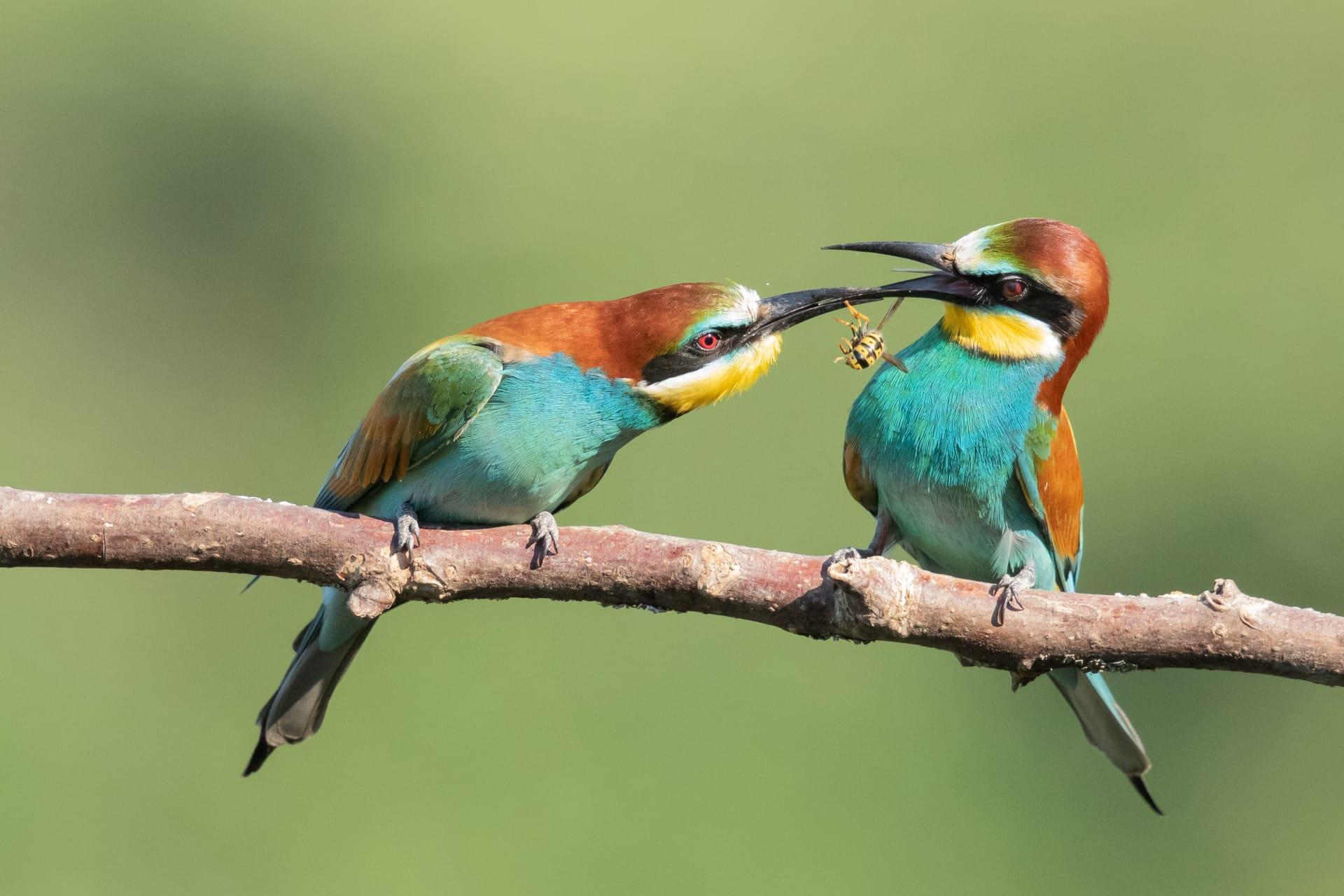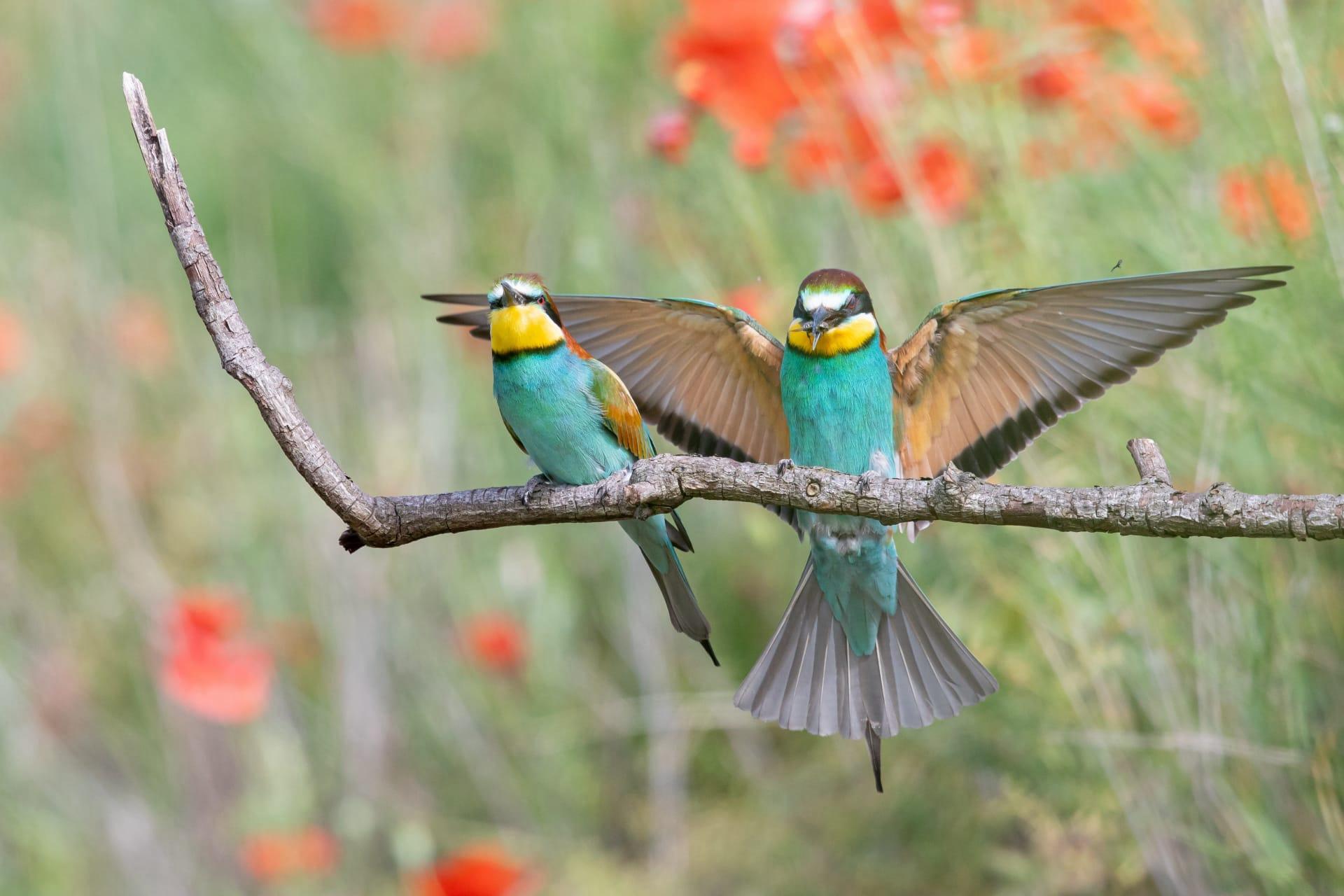1
Rollers, known for their acrobatic flights, exhibit a fascinating behavior called "rolling," where they twist and turn in the air, often during the breeding season to attract mates. This aerial show includes rapid dives, sharp turns, and loops, a display of agility and strength. The European Roller, for example, can reach speeds up to 30 kilometers per hour during these dives.
Another interesting aspect of rollers is their vibrant plumage. The Lilac-breasted Roller, native to Africa, boasts an impressive array of colors with over eight different hues on its body. Its chest displays a vivid lilac color, while its wings are a mix of blues, greens, and browns. This striking appearance is not just for show; it plays a crucial role in mating rituals and territorial defense.

2
Rollers have a unique diet that includes a wide range of insects, small reptiles, and even amphibians. They are known to catch their prey mid-flight, showcasing their impressive agility. The European Roller, for example, primarily feeds on beetles, grasshoppers, and sometimes small rodents, consuming around 60 grams of food daily, which is roughly 10% of its body weight.
These birds are also known for their migratory behavior. The European Roller, for instance, undertakes a long migration journey annually, traveling over 10,000 kilometers from Europe to Africa. This migration is not only a feat of endurance but also a necessary journey for their survival, as they move in search of warmer climates and abundant food sources during the winter months.

3
Rollers are also known for their nesting habits. They prefer to nest in tree cavities or abandoned woodpecker holes, often at heights of 3 to 10 meters above the ground. This height provides safety from ground predators. The Eurasian Roller, for example, lays 3 to 6 eggs per clutch, and both parents take turns incubating the eggs for about 20 days.
Another intriguing fact about rollers is their vocalization. They are known for their loud and varied calls, especially during the breeding season. The Abyssinian Roller, for instance, emits a loud, harsh 'kaa-kaa-kaa' call when threatened or during courtship displays. These vocalizations are crucial for communication, particularly in dense habitats where visual cues might be limited.

4
The Indian Roller, native to South Asia, is revered in various cultures and is the state bird of three Indian states. This species is celebrated for its stunning blue plumage and significant presence in Indian mythology and folklore. The bird is often associated with good luck and prosperity, and seeing one is considered auspicious.
Rollers are also notable for their role in pest control. Their diet of insects and small animals helps regulate pest populations, making them beneficial to agriculture. Farmers often welcome rollers on their lands, as these birds can consume large quantities of crop-damaging insects like grasshoppers and locusts, providing a natural form of pest control.

5
Despite their impressive abilities, rollers face various threats, including habitat loss and pesticide use. These factors have led to a decline in roller populations in certain areas. Conservation efforts are underway to protect their habitats and reduce threats from human activities. For instance, installing nest boxes has been a successful strategy in increasing the breeding success of the European Roller.
The mating dance of rollers is a captivating spectacle. Males perform intricate aerial displays to woo females. These dances involve a series of acrobatic maneuvers like dives, rolls, and loops, often accompanied by loud calls. This display not only highlights the male's physical fitness but also his ability to secure a territory, an important factor in attracting a mate.